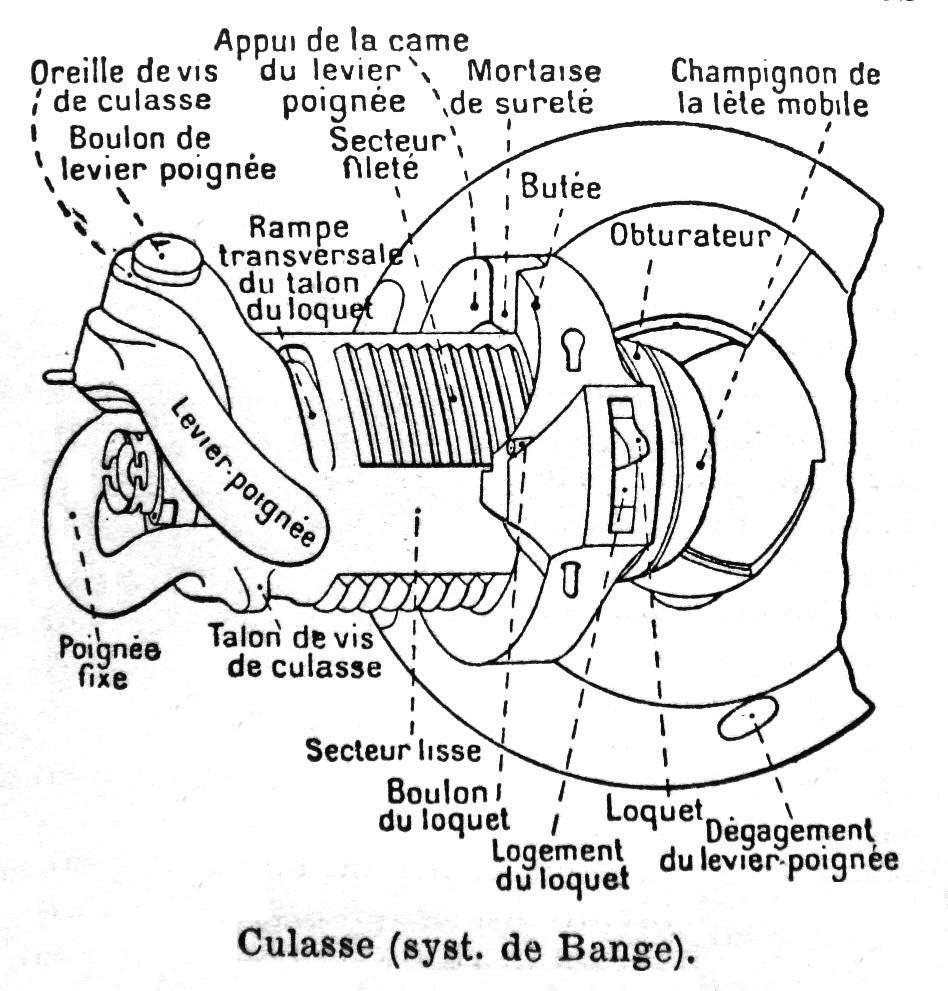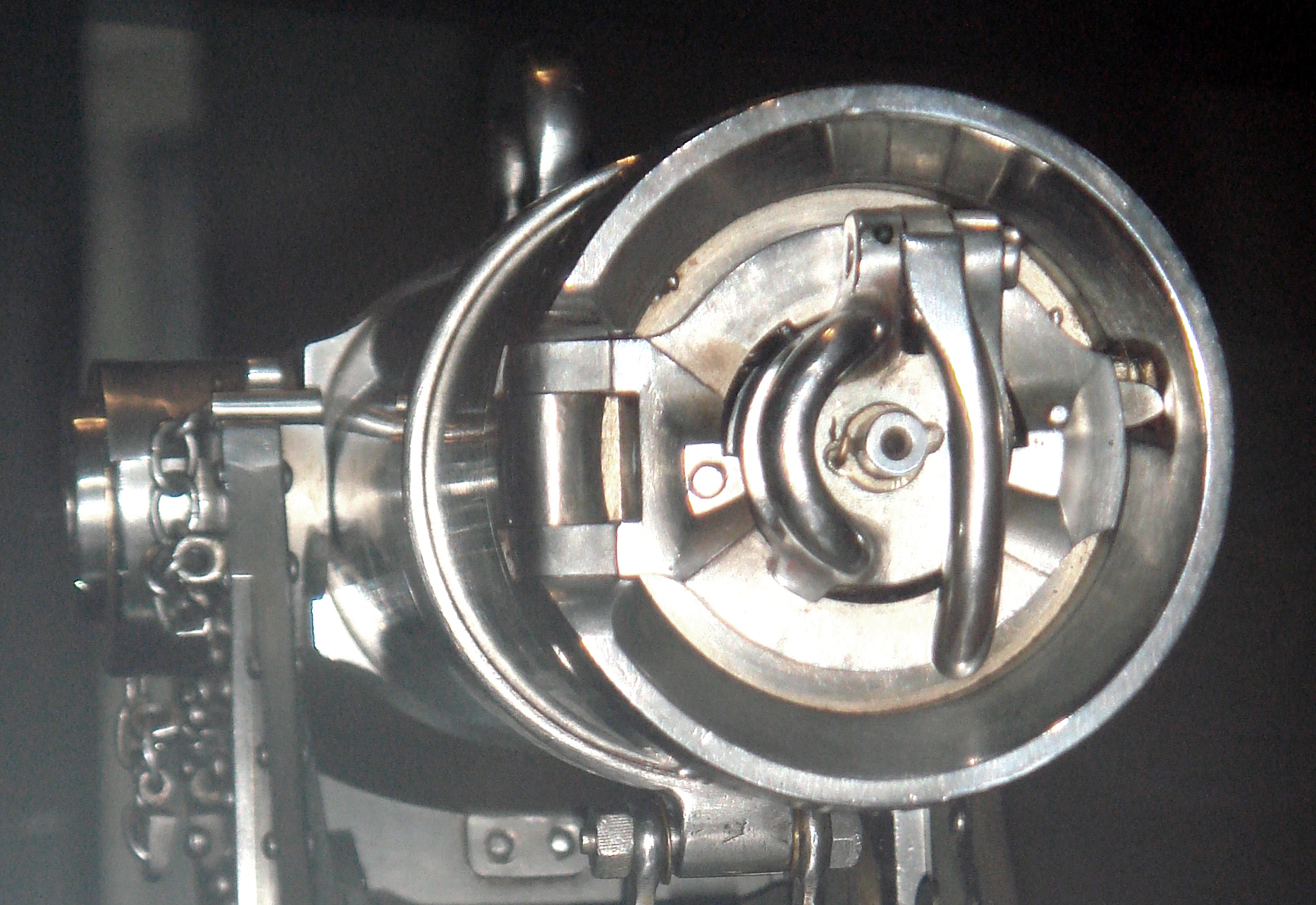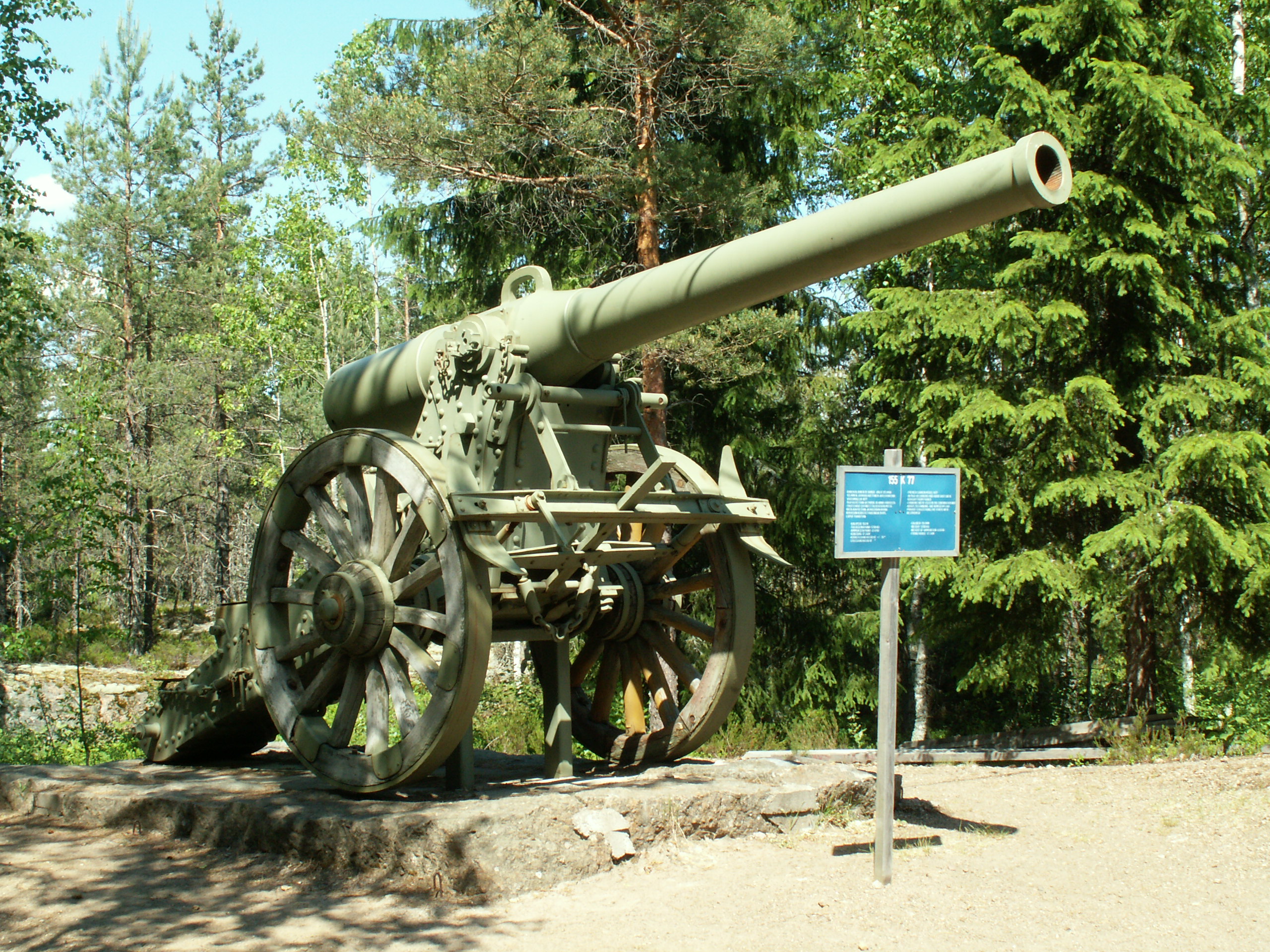De Bange on:
[Wikipedia]
[Google]
[Amazon]
Charles Ragon de Bange (17 October 1833 – 9 July 1914) was a French




 Many attempts had been made at developing breech-loading cannons, but had only partial success sealing of the breech. When fired, hot gases and burning gunpowder could escape, losing power and potentially burning the operating crew. Rifles, with smaller loads and thus less stress, were able to use rubber in O-rings as on the Chassepot rifle. The same principle of breech sealing applied on cannons was not as easy to develop. Several materials were able to hold the pressure and heat of cannon fire, but did not expand like rubber, thereby failing to provide a tight seal. The most successful of those designs was the Broadwell ring invented by American engineer Lewis Wells Broadwell (who worked as a sales agent for the
Many attempts had been made at developing breech-loading cannons, but had only partial success sealing of the breech. When fired, hot gases and burning gunpowder could escape, losing power and potentially burning the operating crew. Rifles, with smaller loads and thus less stress, were able to use rubber in O-rings as on the Chassepot rifle. The same principle of breech sealing applied on cannons was not as easy to develop. Several materials were able to hold the pressure and heat of cannon fire, but did not expand like rubber, thereby failing to provide a tight seal. The most successful of those designs was the Broadwell ring invented by American engineer Lewis Wells Broadwell (who worked as a sales agent for the


 In 1873, de Bange became Director of the "Atelier-de-précision" in the Central Depot in
In 1873, de Bange became Director of the "Atelier-de-précision" in the Central Depot in
/ref> A street is named after him (''Rue du Colonel de Bange'') in the city of Versailles (city), Versailles.
File:Canonde155longmodèle1877NYTimes6June1915.jpg
File:Model 1877 155 mm gun Hameenlinna 1.JPG
File:Model 1877 155 mm gun Hameenlinna 2.JPG
File:French220mmTrenchMortar1915.jpg
File:Mortiersde220ToulGarrison.jpg
File:PostcardMortierde220CampdeChâlons.jpg
File:PostcardMortierde220OnWagon.jpg
Breech mechanismsData for all the guns in the De Bange system
{{DEFAULTSORT:Ragon de Bange, Charles French Army officers 19th-century French inventors Artillery of France École Polytechnique alumni 1833 births 1914 deaths
artillery
Artillery consists of ranged weapons that launch Ammunition, munitions far beyond the range and power of infantry firearms. Early artillery development focused on the ability to breach defensive walls and fortifications during sieges, and l ...
officer and Polytechnician. He invented the first effective obturator system for breech-loading
A breechloader is a firearm in which the user loads the ammunition from the breech end of the barrel (i.e., from the rearward, open end of the gun's barrel), as opposed to a muzzleloader, in which the user loads the ammunition from the ( muzzle ...
artillery, which remains in use. He also designed a system of field guns of various calibers which served the French Army well into World War I
World War I or the First World War (28 July 1914 – 11 November 1918), also known as the Great War, was a World war, global conflict between two coalitions: the Allies of World War I, Allies (or Entente) and the Central Powers. Fighting to ...
: the ''Système de Bange''.
Career
De Bange breech obturator system




 Many attempts had been made at developing breech-loading cannons, but had only partial success sealing of the breech. When fired, hot gases and burning gunpowder could escape, losing power and potentially burning the operating crew. Rifles, with smaller loads and thus less stress, were able to use rubber in O-rings as on the Chassepot rifle. The same principle of breech sealing applied on cannons was not as easy to develop. Several materials were able to hold the pressure and heat of cannon fire, but did not expand like rubber, thereby failing to provide a tight seal. The most successful of those designs was the Broadwell ring invented by American engineer Lewis Wells Broadwell (who worked as a sales agent for the
Many attempts had been made at developing breech-loading cannons, but had only partial success sealing of the breech. When fired, hot gases and burning gunpowder could escape, losing power and potentially burning the operating crew. Rifles, with smaller loads and thus less stress, were able to use rubber in O-rings as on the Chassepot rifle. The same principle of breech sealing applied on cannons was not as easy to develop. Several materials were able to hold the pressure and heat of cannon fire, but did not expand like rubber, thereby failing to provide a tight seal. The most successful of those designs was the Broadwell ring invented by American engineer Lewis Wells Broadwell (who worked as a sales agent for the Gatling Gun
The Gatling gun is a rapid-firing multiple-barrel firearm invented in 1861 by Richard Jordan Gatling of North Carolina. It is an early machine gun and a forerunner of the modern electric motor-driven rotary cannon.
The Gatling gun's operatio ...
Company in Europe) in early 1860s and widely applied (without a license) by the Krupp
Friedrich Krupp AG Hoesch-Krupp (formerly Fried. Krupp AG and Friedrich Krupp GmbH), trade name, trading as Krupp, was the largest company in Europe at the beginning of the 20th century as well as Germany's premier weapons manufacturer dur ...
company on their breech-loaders.
In 1872, de Bange designed the ''de Bange system'', a new type of obturating ring for breech-loading artillery pieces. His system utilized the same general principle devised by Andrew Hotchkiss ca. 1855 for his rifled muzzle-loading projectiles, where two parts of the shell squeezed a soft (in that case lead) ring under the pressure of gunpowder fumes to obturate the barrel (see Rotation of ammunition
''Rotation of ammunition'' is a term used with reference to guns.
Projectiles intended for RML ( rifled muzzle-loading) guns were at first fitted with a number of gun-metal studs arranged around them in a spiral manner corresponding to the twi ...
), and used a breech block made of three parts; an interrupted screw locking mechanism at the rear, a doughnut-shaped grease-impregnated asbestos
Asbestos ( ) is a group of naturally occurring, Toxicity, toxic, carcinogenic and fibrous silicate minerals. There are six types, all of which are composed of long and thin fibrous Crystal habit, crystals, each fibre (particulate with length su ...
pad that sealed the breech, and a rounded movable "nose cone" at the front. When the gun fired, the nose was driven rearward, compressing the asbestos pad and squeezing it so it expanded outward to seal the breech. The French referred to the shape of the breech's nose as "mushroom like", as it resembled the cap of a mushroom
A mushroom or toadstool is the fleshy, spore-bearing Sporocarp (fungi), fruiting body of a fungus, typically produced above ground on soil or another food source. ''Toadstool'' generally refers to a poisonous mushroom.
The standard for the n ...
.
The action was controlled by a handle, normally mounted vertically on the right side of the breech. When lifted, the handle operated a cam that forced the breech to rotate counter-clockwise, unlocking the interrupted thread. The entire breech was then pulled rearward with the same handle, sliding on a ring-shaped holder. The breech holder was hinged on one side, normally the left, so when the breech block was slid all the way to the rear it could be rotated out of the way for loading.
The de Bange system was widely adopted, including by the United States Navy
The United States Navy (USN) is the naval warfare, maritime military branch, service branch of the United States Department of Defense. It is the world's most powerful navy with the largest Displacement (ship), displacement, at 4.5 millio ...
and the British Royal Navy
The Royal Navy (RN) is the naval warfare force of the United Kingdom. It is a component of His Majesty's Naval Service, and its officers hold their commissions from the King of the United Kingdom, King. Although warships were used by Kingdom ...
. The technique developed by de Bange is still in use.
The only major advance on the original de Bange system was the introduction of the stepped screw in the Welin breech block of 1889, which greatly increased the load-bearing surface of the breech, allowing them to be made shorter, simpler, more secure and faster to operate. Other block mechanisms are also used, but the de Bange obturator remains widespread even on these.
Manufacture of cannons


 In 1873, de Bange became Director of the "Atelier-de-précision" in the Central Depot in
In 1873, de Bange became Director of the "Atelier-de-précision" in the Central Depot in Paris
Paris () is the Capital city, capital and List of communes in France with over 20,000 inhabitants, largest city of France. With an estimated population of 2,048,472 residents in January 2025 in an area of more than , Paris is the List of ci ...
(Paris arsenal's precision workshop), in order to redesign French light and heavy artillery.
Between 1877 and 1881, de Bange developed several artillery pieces, such as the De Bange 90 mm cannon (field artillery
Field artillery is a category of mobile artillery used to support army, armies in the field. These weapons are specialized for mobility, tactical proficiency, short range, long range, and extremely long range target engagement.
Until the ear ...
, 1877), the De Bange 80 mm cannon ( mountain artillery, 1878), the De Bange 120 mm L cannon (siege artillery, 1878), De Bange 155 mm L cannon (siege artillery, 1877), De Bange 155 mm C howitzer (siege artillery, 1881), as well as mortars for siege warfare, such as the 1880 De Bange 220 mm mortar, 1885 De Bange 270 mm and coastal batteries such as the De Bange 240 mm and De Bange 270 mm. Several of these weapons were used during the colonial wars of the end of the 19th century, during the First World War
World War I or the First World War (28 July 1914 – 11 November 1918), also known as the Great War, was a World war, global conflict between two coalitions: the Allies of World War I, Allies (or Entente) and the Central Powers. Fighting to ...
and also sometimes during the Second World War
World War II or the Second World War (1 September 1939 – 2 September 1945) was a World war, global conflict between two coalitions: the Allies of World War II, Allies and the Axis powers. World War II by country, Nearly all of the wo ...
. As with other cannons, the de Bange cannons had the disadvantage of being slow to fire, as they were affected by recoil
Recoil (often called knockback, kickback or simply kick) is the rearward thrust generated when a gun is being discharged. In technical terms, the recoil is a result of conservation of momentum, for according to Newton's third law the force requ ...
, and thus had to be re-aimed after every shot. This inconvenience would be solved with the appearance of the famous Canon de 75
Canon or Canons may refer to:
Arts and entertainment
* Canon (fiction), the material accepted as officially written by an author or an ascribed author
* Literary canon, an accepted body of works considered as high culture
** Western canon, th ...
, that had a hydro-pneumatic recoil mechanism, which kept the gun's trail and wheels perfectly still during the firing sequence. However, there were two howitzers the Obusier de 120 mm C modèle 1890 and Obusier de 155 mm C modèle 1890 with de Bange breeches and recoil mechanisms designed by Captain Louis Henry Auguste Baquet. From 1882 to 1889, de Bange was Director of the Cail Manufacturing Corporation (''Société Anonyme des Anciens Etablissements Cail''), the forerunner of the ''Société française de constructions mécaniques'', where he worked on weapon design and trade, selling guns to such countries as Serbia
, image_flag = Flag of Serbia.svg
, national_motto =
, image_coat = Coat of arms of Serbia.svg
, national_anthem = ()
, image_map =
, map_caption = Location of Serbia (gree ...
.''Girding for Battle'' Ingrid A. Sandole-Staroste, Donald J. Stocker, Jonathan A. Grant, p.5/ref> A street is named after him (''Rue du Colonel de Bange'') in the city of Versailles (city), Versailles.
See also
*Cannons
A cannon is a large-caliber gun classified as a type of artillery, which usually launches a projectile using explosive chemical propellant. Gunpowder ("black powder") was the primary propellant before the invention of smokeless powder during t ...
* Shells
* Canet guns
Gallery
De Bange 155 mm cannon (1877)
De Bange 220 mm mortar (1880)
References
External links
Breech mechanisms
{{DEFAULTSORT:Ragon de Bange, Charles French Army officers 19th-century French inventors Artillery of France École Polytechnique alumni 1833 births 1914 deaths